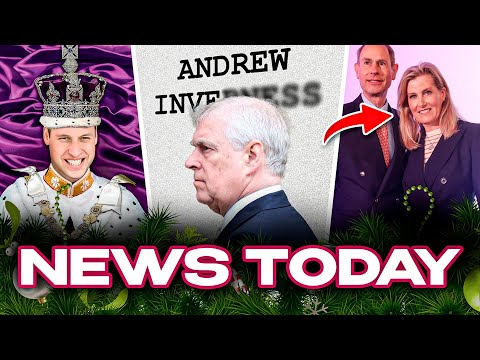Few moments in recent British history have stirred as much public intrigue and debate as Prince Harry and Meghan Markle’s decision to step back from their royal duties. The United Kingdom, renowned for its enduring monarchy, witnessed a pivotal chapter unfold in January 2020 when the "Sandringham Summit" brought together senior royals to address the couple's groundbreaking announcement.
This secretive, high-stakes meeting convened the late Queen Elizabeth II, King Charles (then Prince of Wales), Prince William, and the late Prince Philip at Sandringham to discuss Harry and Meghan’s desire to forge a new path away from traditional royal responsibilities. The repercussions of their decision rippled through the royal family and the nation, setting the stage for a historic re-evaluation of royal roles in modern Britain.
The Sandringham Summit emerged as a turning point for the monarchy. According to revelations from a recent documentary, emotions ran high within Sandringham’s walls. Prince Philip, known for his unwavering sense of duty, was reportedly “horrified” by Harry’s decision. The intensity of the moment led Prince Philip to leave the meeting, unable to face what he perceived as a threat to the Royal Family’s unity. This dramatic departure underscored the summit’s gravity and signaled just how unprecedented the situation was for Britain’s royal lineage.
In the aftermath, Harry and Meghan unveiled their new vision. Their statement detailed intentions to step back as ‘senior’ royals, seek financial independence, split time between the UK and North America, and continue supporting both the Queen and their charitable patronages. They emphasized a hope to carve out a “progressive new role” within the institution—striking a balance between personal autonomy and sustained dedication to royal causes.
Buckingham Palace responded with characteristic calm. Queen Elizabeth II released a measured statement supporting Harry and Meghan’s pursuit of independence, even as she expressed a preference for them to remain working royals. The Palace announced a transition period for the Sussexes, making clear they would not draw on public funds while spending time in both Canada and the UK. This response reflected an effort to honor tradition while adapting to change.
How Harry & Meghan’s Departure Reshaped Royal Traditions
The United Kingdom has long regarded its monarchy as an emblem of stability and continuity. Harry and Meghan’s departure marked a seismic shift that challenged centuries-old customs. Public reaction was sharply divided—some Britons empathized with the couple’s desire for privacy and freedom, while others lamented what they saw as an abandonment of royal duty. The Sussexes’ decision ignited debate over modernization versus tradition within one of the world’s oldest institutions.
The couple’s move also raised questions about their future ties to Britain and their evolving roles within society. As they navigated life between North America and the UK, observers speculated on how these changes might influence international relations and perceptions of the royal family in a global context.
The Sandringham episode continues to resonate across Britain. It compelled both the monarchy and public to reflect on what it means to serve, belong, and adapt within an ever-changing society. As internal family matters spilled onto the global stage, the episode offered rare insight into the pressures facing even the most revered institutions.
The outcome of this turning point is still unfolding. The Royal Family’s handling of Harry and Meghan’s departure will likely inform debates about modernization, privacy, and duty for years to come.
A Defining Moment in Modern British Royal History
For those wishing to explore this historic event in greater detail, further information is available in the original article at Geo News. This episode stands as a reminder of how even age-old institutions must navigate evolving expectations in contemporary society.
The reverberations from the Sandringham Summit highlight both the resilience and adaptability of Britain’s royal legacy. Whether viewed as a crisis or an evolution, it remains one of the defining episodes of 21st-century monarchy.
As new developments arise and public opinions continue to evolve, this chapter stands as both a cautionary tale and a hopeful blueprint for institutional change.
In reflecting on these events, we’re reminded that Britain’s past continually shapes its present—and that tradition and transformation are inextricably linked on the royal stage.
Warm regards until next time—may the stories of Britain’s past continue to illuminate our present.










Leave a Comment